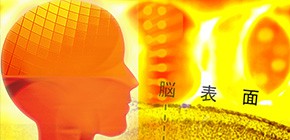
Demonstration of critical roles of TRPV1 in inducing theta-band synchronization between gustatory and autonomic insular cortices
Researchers under the leadership of KANG Youngnam , Professor, Graduate School of Dentistry, Osaka University, and researchers at Morinaga Co., Ltd. , have clarified that neural activity caused by electric stimuli from capsaicin, a spicy compound in chili peppers, administered in the primary gustatory area in sliced rat brain samples spread to the area related to autonomic functions adjacent the gustatory area. Furthermore, their research demonstrated that neural network activation induced theta-band (4 ~ 8Hz) synchronization between the gustatory insula (Gu-I) and the autonomic insula (Au-I). More specifically, their research demonstrated that it was highly likely that such capsaicin stimulation resulted in viscero-visceral autonomic reflexes such as perspiration and facilitation of cardiovascular activity.
Abstract
" In the insular cortex, the primary gustatory area caudally adjoins the primary autonomic area that is involved in visceral sensory-motor integration. However, it has not been addressed whether neural activity in the gustatory insula (Gu-I) is coordinated with that in the autonomic insula (Au-I). We have demonstrated that TRPV1 activation in Gu-I induces theta-band synchronization between Gu-I and Au-I in rat slice preparations. Electron-microscopic immunohistochemistry revealed that TRPV1 immunoreactivity was much higher in Gu-I than in Au-I, and was mostly detected in dendritic spines receiving asymmetrical synapses. Whole-cell voltage-clamp recordings revealed that, in Gu-I, capsaicin-induced currents in layer 3 (L3) pyramidal cells (PCs) displayed no apparent desensitization, while those in layer 5 (L5) PCs displayed Ca2+-dependent desensitization, suggesting that L3 and L5 PCs respond differentially to TRPV1 activation. Voltage-sensitive dye imaging demonstrated that TRPV1 activation in Gu-I can alter an optical response with a monophasic and columnar temporospatial pattern evoked within Gu-I into an oscillatory one extending over Gu-I and Au-I. Power and cross-power spectral analyses of optical responses revealed theta-band synchronization between Gu-I and Au-I. Whole-cell current-clamp recordings demonstrated that such theta-band waves were mediated by sustained rhythmic firings at 4 and 8 Hz in L3 and L5 PCs, respectively. These results strongly suggested that theta-band oscillatory neural coordination between Gu-I and Au-I was induced by two distinct TRPV1-mediated theta-rhythm firings in L3 and L5 PCs in Gu-I. This network coordination induced by TRPV1 activation could be responsible for autonomic responses to tasting and ingesting spicy foods. "

Figure 1

Figure 2
To read the full research report entitled " Capsaicin Induces Theta-Band Synchronization between Gustatory and Autonomic Insular Cortices ," please go to this page at the Journal of Neuroscience website.
Related links :
